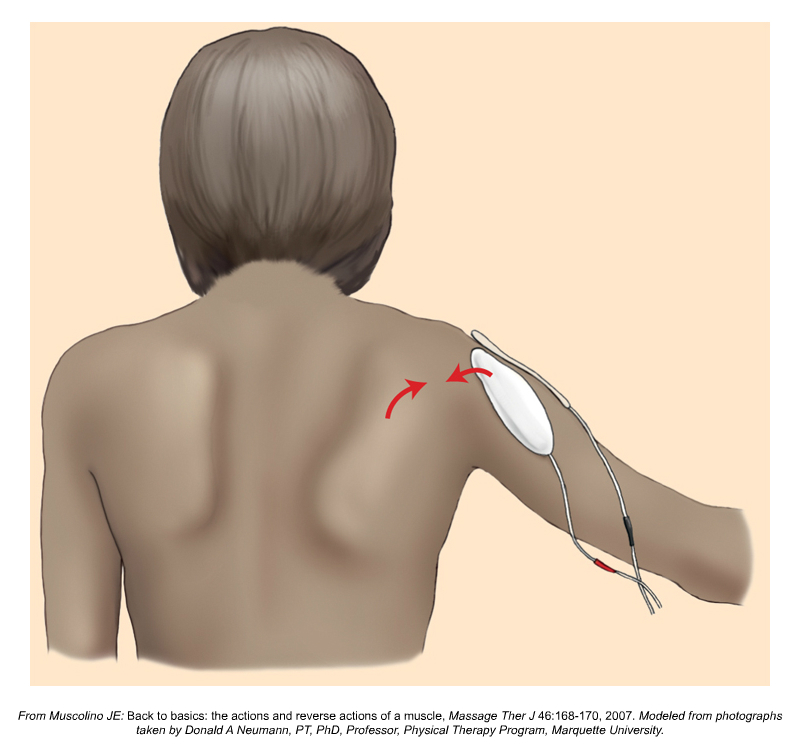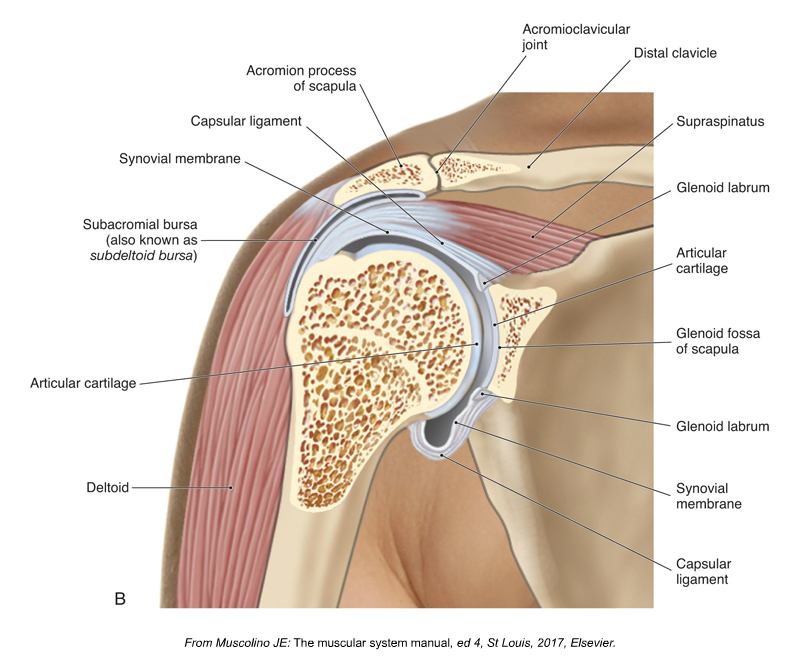Shoulder Pain
 Shoulder pain is highly prevalent in racket and overhead sports athletes, as they require a high-energy transfer through the shoulder at rapid speeds through large ranges of motion. The prevalence of shoulder pain has been estimated at 12% in amateur golf, 24% in high-level adolescent tennis, and 50% in middle-aged tennis players. Even higher is the prevalence of shoulder pain in swimmers, ranging between 40% and 91%.
Shoulder pain is highly prevalent in racket and overhead sports athletes, as they require a high-energy transfer through the shoulder at rapid speeds through large ranges of motion. The prevalence of shoulder pain has been estimated at 12% in amateur golf, 24% in high-level adolescent tennis, and 50% in middle-aged tennis players. Even higher is the prevalence of shoulder pain in swimmers, ranging between 40% and 91%.
The conventional approach to diagnose shoulder pain involves specific structural/anatomic diagnoses, such as arthritis and rotator cuff tear. However, clinicians are now considering functional risk factors that can be modified that are associated with the onset of shoulder pain.
Scapular Dyskinesis

Scapular Downward Rotation and Impingement. Permission Joseph E. Muscolino. Kinesiology – The Skeletal System and Muscle Function, 3ed (Elsevier, 2017). Modeled from a photo by Donald Neumann, PT.
One potential risk factor for shoulder pain is scapular dyskinesis. Scapular dyskinesis refers to altered position and motion of the scapula. Scapular dyskinesis may reduce subacromial space, and also reduce rotator cuff strength, increase the strain within the rotator cuff, and promote apoptotic changes (cell death) in tenocytes within the rotator cuff tendons. Rotator cuff weakness may impair motor control, resulting in superior translation of the humeral head, resulting in shoulder impingement syndrome (usually of the distal tendon of the supraspinatus and the subacromial bursa). In fact, scapular dyskinesis has been associated with shoulder pain, and specifically shoulder impingement syndrome.

Anterior view of a frontal plane section of the glenohumeral Joint. Permission Joseph E. Muscolino. The Muscular System Manual – The Skeletal Muscles of the Human Body, 4ed (Elsevier, 2017).
Study
A systematic review published in British Journal of Sports Medicine investigated if the presence of scapular dyskinesis in asymptomatic athletes increased the risk of developing future shoulder pain.
The review included five studies with a total of 419 athletes.
The finding is that athletes with scapular dyskinesis have 43% greater risk of developing shoulder pain than those without scapular dyskinesis.
Application
The authors suggested that scapular-focused exercises might be of value for injury prevention. However, it remains unclear if scapular dyskinesis is a direct or indirect factor. Addressing scapular dyskinesis in isolation is unlikely to be effective if the scapular dyskinesis is, for example, an adaptive compensation secondary to excessive training load, whereby loading issues should first be addressed. It was suggested that clinicians should continue to consider scapular position during holistic shoulder exercises designed to promote upper limb robustness and reduce injury susceptibility.
This blog post article was created in collaboration with www.terrarosa.com.au.
(Click here for the blog post article: Joint Motion Palpation – Shoulder Girdle Joints)

